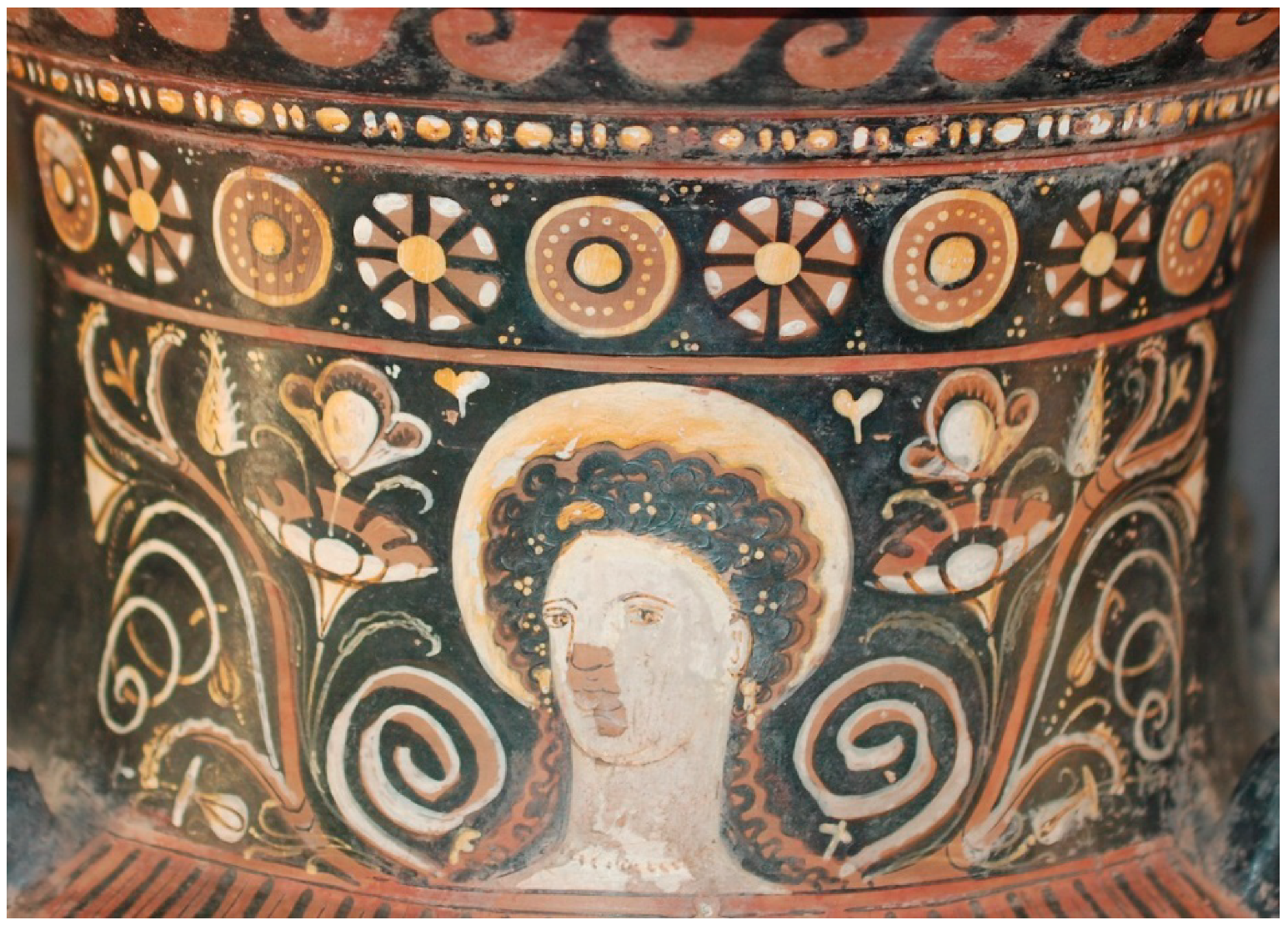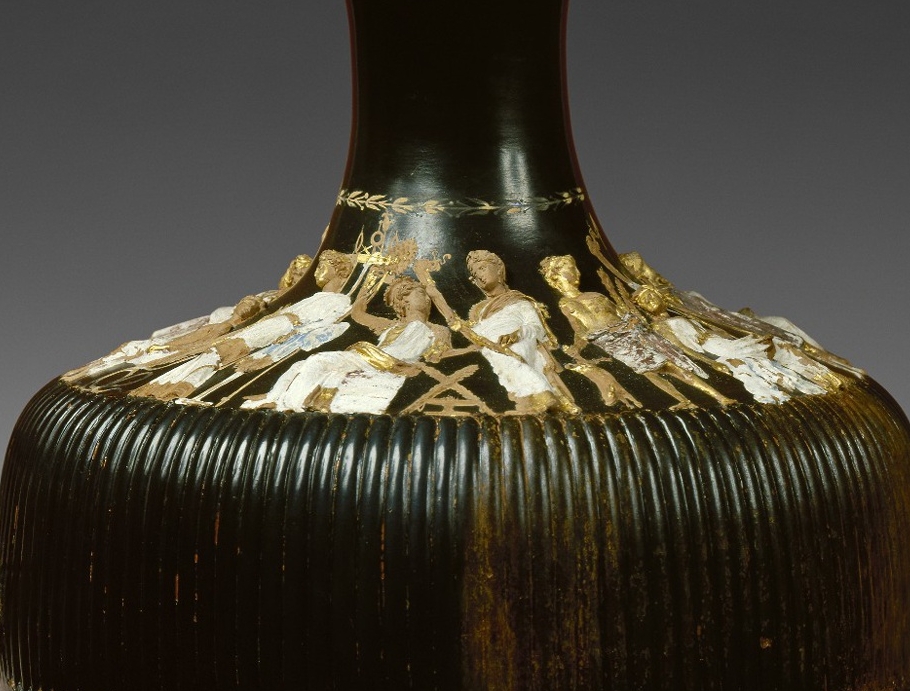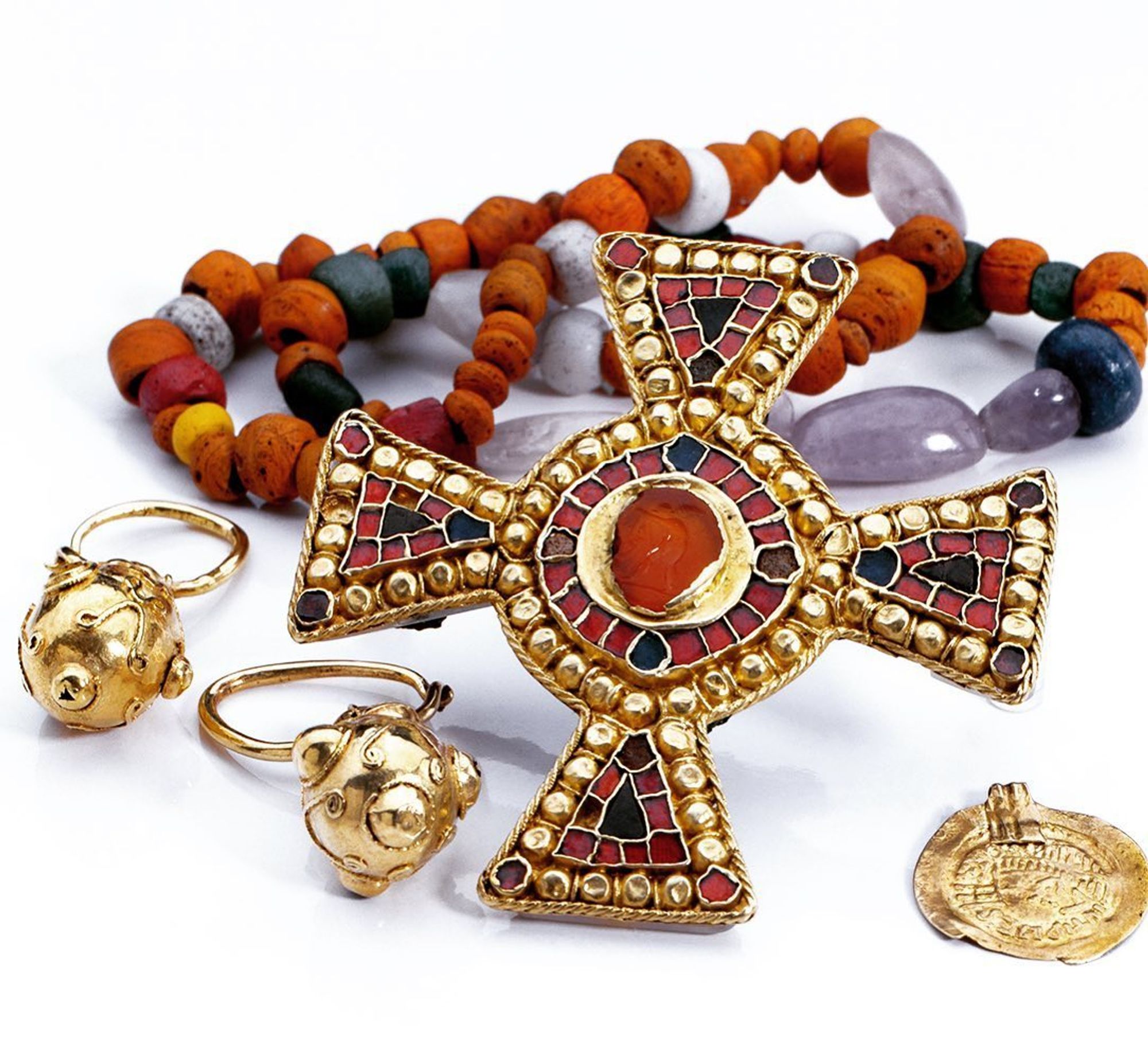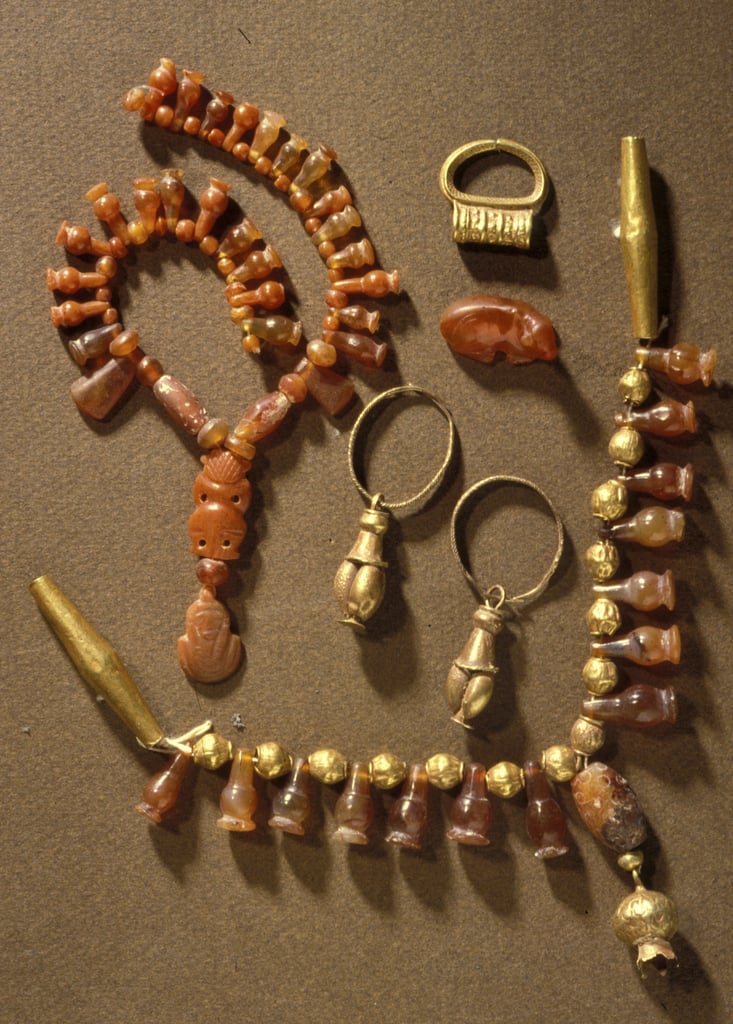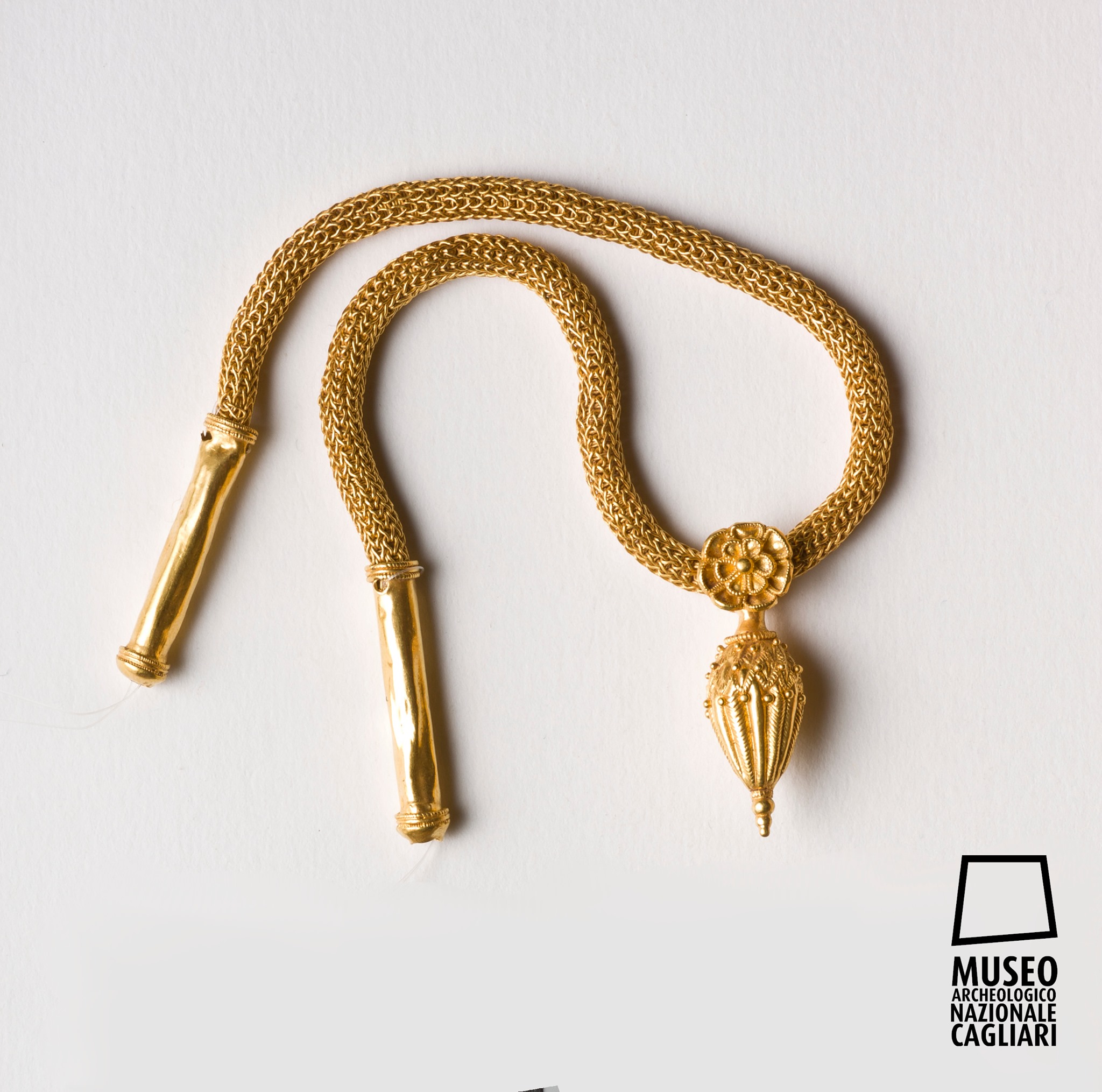The tomb of the contrada Faraone in Locri: unpublished documentation for the study of the naiskoi of Magna Graecia
Fabien Bièvre-Perrin and Myriam Fincker https://doi.org/10.4000/mefra.4665
“Located at the upper angles of the facade, at the soffit of the drip edge, the two poppy flowers are represented at two points in the plant cycle: on the left a flower with a well-opened corolla, on the right a flower with withered petals with a capsule in its center.

The powers of the poppy are well known to the ancient Greeks; they use them in their pharmacopoeia as a sedative, sleeping pill, antidote, analgesic, but also as a drug, even as a poison. A priori , it is not these medical uses that account for their presence on a tomb, but their eschatological religious symbolism. Closely related to sleep and death, the poppy is a symbol of appeasement and rebirth associated with Hypnos, Thanatos, Hecate, Asclepius and Persephone. Also we find representations in sanctuaries of these deities in Taranto, Corinth, Samos and Epidaurus (flowers similar to those of Locri adorn the boxes of the tholos of Asclepius). It may be among the objects hidden in the cistus of the Eleusinian mysteries.
In Locri and in the Locrian colony of Hipponion, the poppy is relatively frequent in the coroplathy, as shown for example by the famous pinakes and the terracotta models of the sanctuary of Mannella which belong to the symbolic repertoire of the ceremonies preceding the marriages. He is still in close contact with Persephone and Demeter and at a crucial stage in the myth: it is by automatically bringing poppy to her mouth that the mother, in search of her daughter, ends her fast and forgets her grief. This symbolism of appeasement is undoubtedly evoked by Homer when he describes a drink probably containing poppy: “a dose in the crater kept all day long anyone who had drunk it from shedding a tear, even if he had lost his father and mother “. It goes hand in hand with the promise of perpetuation of life (when the poppy boll bursts, it releases thousands of seeds).
In a city where the importance of the Eleusinian couple and Orphism is well attested, the presence of the poppy on a funerary naiskos is therefore not surprising . Represented in its development and in its final phase, it symbolizes the cycles of life – the maturity and death – and eternal rest, the announcement of a revival of the death and the passing of mourning by living.
31] Bréchet 2007; for data specific to Magna Graecia, see Hinz 1998, p. 42 and 46. In addition, p. 203, Valentina Hinz identifies Persephone on a Locri coin depicting a goddess seated on a throne, with a peg and a poppy-shaped scepter – see for example a copy kept by the BNF: notice n ° FRBNF41741969, http: // catalog .bnf.fr / ark: / 12148 / cb41741969b (consulted on 09/16/2017 ) .
32] Cf. Meirano 2000a, p. 177; Meirano 2002, p. 166; Meirano 2003. The young girls went in the middle of the night to this shrine far from the city before their marriage; according to Valeria Meirano, the poppy is a symbol of the passage from the state of young girl to that of the wife and would refer to the change of state caused by the taking of opium (opium would have been born from the tears of Aphrodite to the death of Adonis).
35] Meirano 2002, p. 165: “We are in the presence of an ambiguous plant which constitutes, like the pomegranate, a real bridge between life and death. » Magnien 1938, p. 136: ‘The poppy that is offered to Demeter symbolizes the earth, but also represents the force of sleep and forgetting which takes hold of men after death and before rebirth.'”

